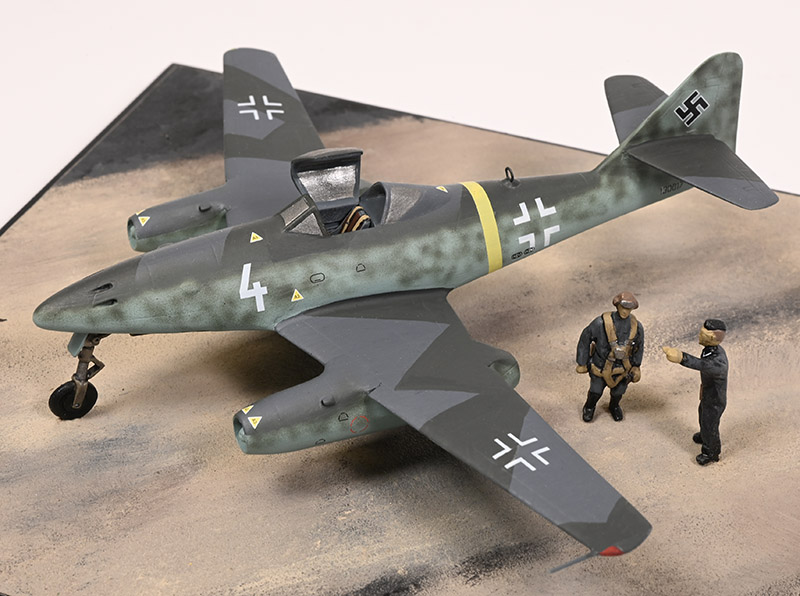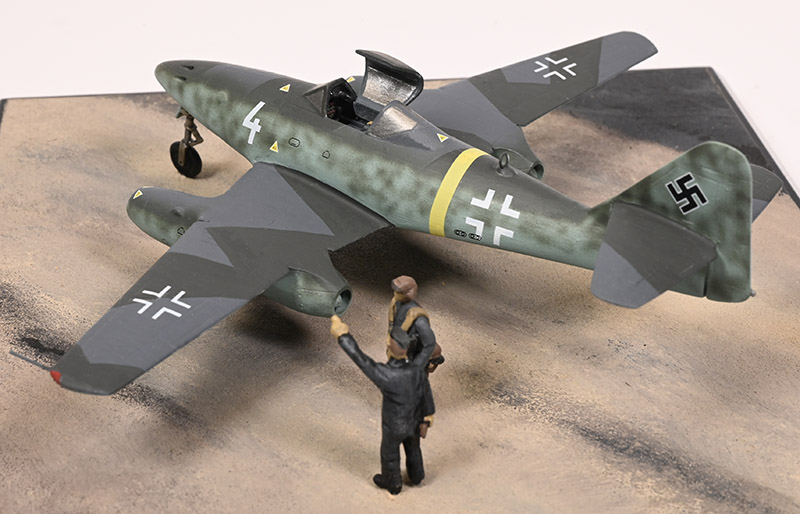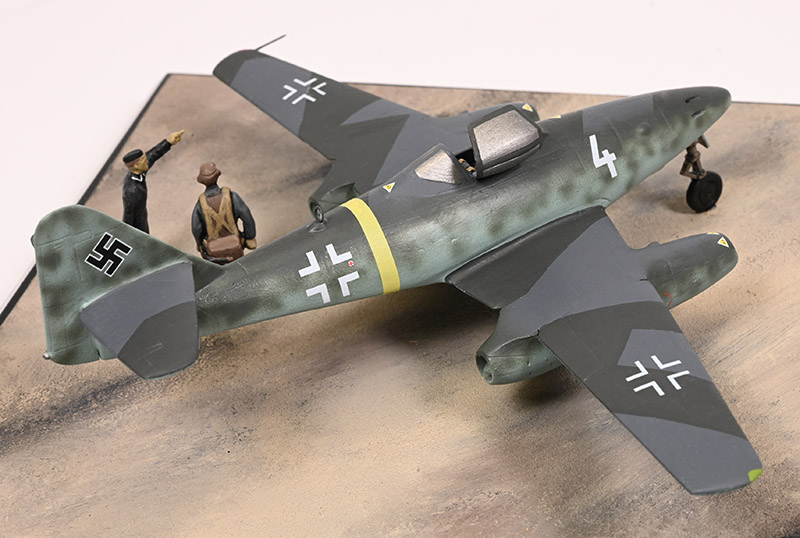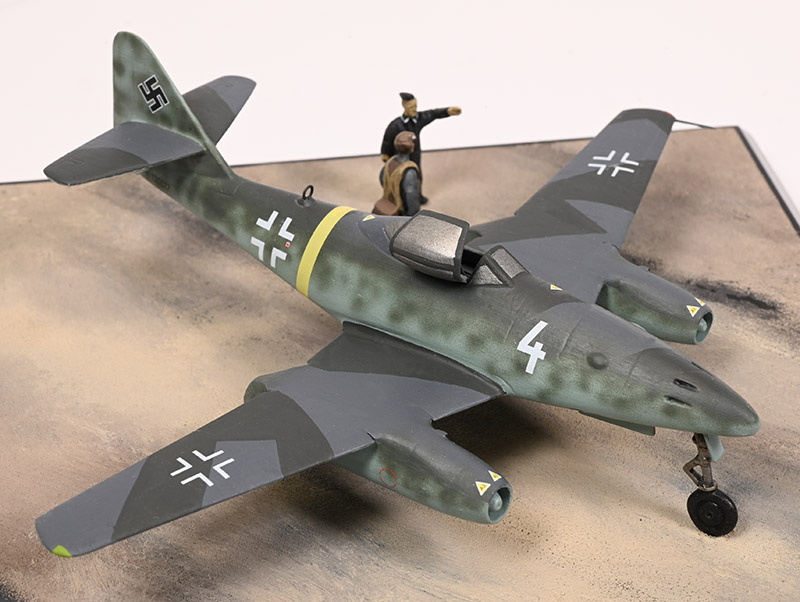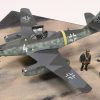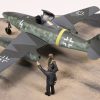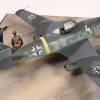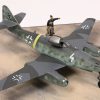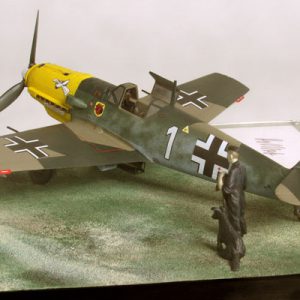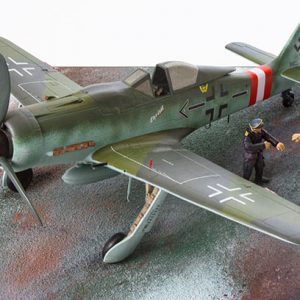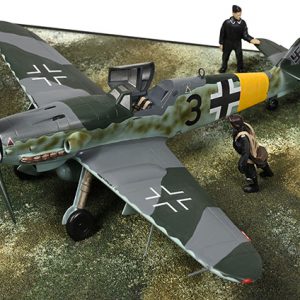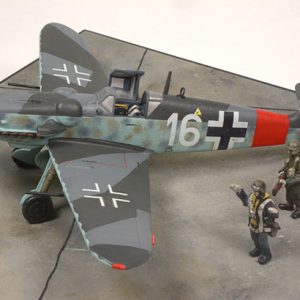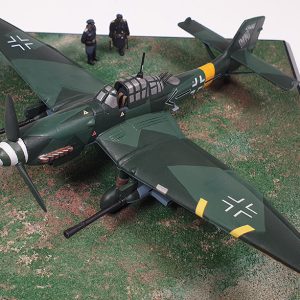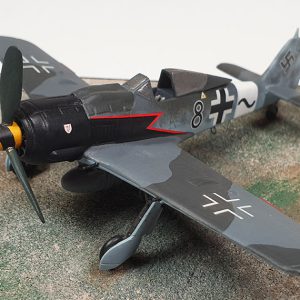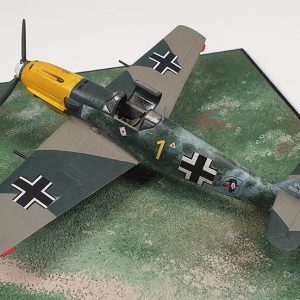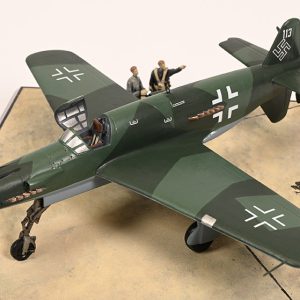Messerschmitt Me 262 S-12 ‘White 4’ Werknummer 130 017
Erprobungskommando 262, Leutnant Alfred Schreiber, Lechfeld, Germany, Summer 1944.
The Messerschmitt Me 262 was the first jet engined fighter to see air-to-air combat. The development programme was underway as early as 1940, but problems with the Jumbo 004 jet engines resulted in the aircraft’s introduction to service being delayed into 1944. Conceived as an interceptor, there was more delay in implementing this role fully while the type was adapted for ground attack tasks.
As production of the new jet built up (120 aircraft by summer 1944), Eprobungskommando 262 (Ekdo 262) was tasked with introducing the new jet into service. Pilots received their first Me 262’s S and A-1a’s in April 1944. The S -series was the designation for early production fighters and circa 20 machines of this type were produced (Werknummers W.Nr. 130 006 – 130 025).
On 26th July 1944, Leutnant Alfred Schreiber, flying Messerschmitt Me 262 S-12 W.Nr. 130 017, was credited with the first jet victory in history when he intercepted de Havilland Mosquito PR Mk XVI MM273 of No. 544 Squadron RAF at about 28,000 ft. above Munich. The Mosquito crew, Flight Leutenant Albert Wall and Pilot Officer Albert Lobban managed to dodge five attacks before being hit. Reporting a piece falling from the plane, Schreiber got credit for the kill. Meanwhile, after seeing the outer door blasted away and with their Mosquito depressurising, Wall and Lobban dived into cloud. With engine cylinder temperatures running dangerously high as a result of the damage, the aircraft was unable to return to its home base, RAF Benson in Oxfordshire, England. The crew headed for the nearest Allied airfield in northern Italy. In the emergency landing at Fermo. During debriefing the crew reported their combat with an astoundingly fast German fighter with no propellers. Following its repair, MM273 continued in service, including with 728 Naval Air Squadron (Fleet Air Arm) during the Cold War era. On 31st October 1950, MM273 crashed into sea during a single-engine landing on Malta. Both crew members perished.
White 4, W.Nr. 130 017 was an early production Messerschmitt Me 262 with factory code VI+AG, As one of the first operational jets, White 4’s upper surfaces were painted in RLM 74/75 grey tone splinter pattern and mottle. A scheme so typical of the type in summer 1944. A “late-war” Me 262 camouflage scheme was issued on 26th September 1944 which featured a revised green tone splinter pattern and mottle comprising RLM 70/71 and RLM 81/82 depending on available paint supplies. The model scheme chosen represents White 4 as the aircraft looked when making aviation history on 26th July 1944. Airframe W.Nr. 130 017 was scrapped in October 1944.
In his short career as a Me 262 pilot, Alfred Schreiber was credited with a further four aerial victories making him the first jet ace in history. Success in engagements with Lightning P-38Fs, resulted in his shooting down two of them in one battle on 29th October 1944. For Schreiber, the day was memorable for another reason as well. The Lightnings belonged to the RAF 7th Photo Recon Group, and were accompanied by Spitfires. After Schreiber achieved his second kill he pulled up in a climbing right turn, and his Me 262 collided with a Spitfire. Both aircraft burst into flames. The British pilot, Flight Lieutenant Wilkins of RAF 4 Squadron, was killed. Although singed and only half conscious, Schreiber jumped from the burning wreckage and deployed his chute. He landed intact, and a day later was back in the air.
Schreiber was killed in a crash landing at Lechfeld on 26th November 1944. His Me 262’s wheels caught the lip of a slit trench, causing the aircraft to cartwheel.


